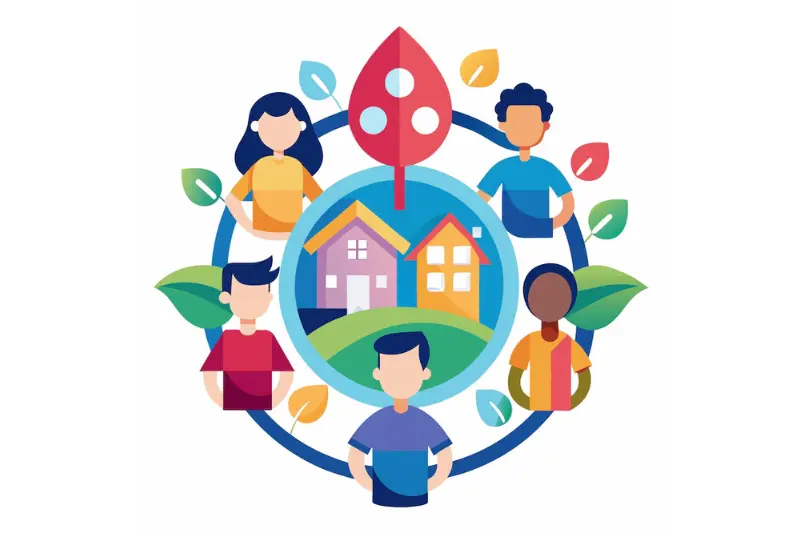Introduction
In today’s fast-moving world, finding helpful and clear information can be a challenge. That’s why THIS IS MY EXACT KEYWORD I WANT THIS KEYWORD MUST IN EVERY HEADING is here to guide you step by step. Whether you’re just starting or looking for better ways to grow, this blog will share easy tips and ideas to help you succeed. We’ve written everything in a simple way so that everyone can understand and use it easily. Let’s begin your journey with THIS IS MY EXACT KEYWORD I WANT THIS KEYWORD MUST IN EVERY HEADING and make learning fun and effective!
What is Social Reform?

Social Reform means making changes in society to improve the lives of people. It focuses on solving problems like inequality, poverty, injustice, education, and human rights. The goal of social reform is to create a fair and better world for everyone.
- These changes can happen through:
- New laws and policies
- Raising awareness about issues
- Community efforts and activism
- Government and public support
For example, movements for women’s rights, ending child labor, or providing free education are all forms of social reform. People who work for these changes are called social reformers, and they play a big role in shaping a better future.
Why Social Reform is Important

Social reform plays a key role in building a just, fair, and peaceful society. It helps remove problems that affect people’s daily lives and ensures that everyone gets equal opportunities.
Promotes Equality
- Helps reduce the gap between the rich and poor
- Supports equal rights for all genders, races, and communities
- Fights against discrimination and unfair treatment
Improves Living Conditions
- Works to provide better housing, healthcare, and education
- Aims to reduce poverty and hunger
- Encourages a higher standard of living for everyone
Supports Human Rights
- Protects freedom of speech, religion, and choice
- Stands up for the rights of children, women, and minorities
- Prevents abuse, exploitation, and injustice
Encourages Social Awareness
- Educates people about important issues
- Inspires citizens to take part in positive changes
- Builds a sense of responsibility in society
Creates a Stronger Nation
- Leads to a more united and peaceful community
- Builds trust in government and social systems
- Supports long-term growth and stability
Step-by-Step Guide on Social Reform
Social reform doesn’t happen overnight. It takes awareness, effort, and teamwork. Here’s a simple step-by-step guide to understand how social reform works and how anyone can be a part of it:
Step 1: Identify the Problem
- Look around your community or society.
- What issues do people face? (e.g., poverty, lack of education, gender inequality)
- Understand the root causes of the problem.
Step 2: Raise Awareness
- Talk about the issue with others.
- Use social media, campaigns, and discussions to spread the word.
- Educate people about why the problem matters.
Step 3: Build a Support Network
- Connect with like-minded individuals, groups, or organizations.
- Work together to find possible solutions.
- Involve schools, local leaders, and communities in your mission.
Step 4: Take Action
- Organize events, workshops, or drives.
- Start petitions, write to authorities, or join peaceful protests.
- Support or launch programs that directly help affected people.
Step 5: Involve Law and Policy Makers
- Push for changes in laws and government policies.
- Meet local representatives or write letters requesting support.
- Share research, statistics, and real-life stories to gain attention.
Step 6: Monitor Progress
- Keep track of what’s improving and what still needs work.
- Ask for feedback from the community.
- Adjust your strategies if needed.
Step 7: Stay Committed
- Social reform takes time and patience.
- Keep learning, spreading awareness, and helping others.
- Inspire more people to join the cause.
| ADVANTAGES | DISADVANTAGES |
| Promotes equality and justice | Can face strong opposition or resistance |
| Improves education, health, and living conditions | Takes time to show visible results |
| Empowers marginalized communities | May lead to political or cultural conflicts |
| Encourages civic participation | Implementation can be costly and complex |
| Helps build a peaceful and fair society | Some reforms may be misused or manipulated for gain |
| Strengthens democracy and citizen participation | Not all reforms are accepted by everyone |
| Inspires youth to be active in social change | Requires continuous effort and monitoring |
FAQ,s
What is social reform?
Social reform means making changes in society to solve problems like inequality, injustice, and discrimination. It aims to improve the lives of all people, especially the poor and disadvantaged.
Why is social reform important?
Social reform is important because it helps create a fair and equal society. It removes old and harmful practices and supports better education, healthcare, and human rights.
Who can bring social reform?
Anyone can contribute to social reform — people, communities, leaders, governments, or social activists. Even small actions can lead to big changes over time.
What are some examples of social reform?
Examples include the fight for women’s rights, ending child labor, improving education for all, banning caste discrimination, and supporting equal pay for equal work.
Is social reform a slow process?
Yes, social reform often takes time. Changing people’s thinking and laws is not easy, but with continuous effort, change does happen.
How can I support social reform?
You can support by spreading awareness, educating others, standing up against injustice, volunteering, or even using social media to share important issues.
Conclusion
Social reform is all about making society better and fair for everyone. It helps remove injustice, supports equality, and creates opportunities for all people. Even small efforts can lead to big changes. By understanding and supporting social reform, we can all help build a brighter and more balanced future.
Bonus point
Here are some bonus points on social reform to consider:
- Everyone’s Voice Matters: Social reform encourages all members of society—no matter their background—to share ideas and work together for positive change.
- Small Changes Can Spark Big Impact: Even minor improvements in local communities can lead to a ripple effect, making society fairer and more supportive overall.
- Creates a Culture of Learning: When societies embrace reform, they often become more open to new ideas and continuous learning, which benefits everyone.
- Encourages Innovation: Reform can drive new solutions that combine technology, creative thinking, and community efforts to solve social challenges.
- Builds Stronger Communities: Working together for reform strengthens the bonds within neighborhoods, leading to a more unified and resilient society.
- Future-Oriented: Social reform is not just about fixing today’s issues—it also prepares society to handle the problems of tomorrow more effectively.







